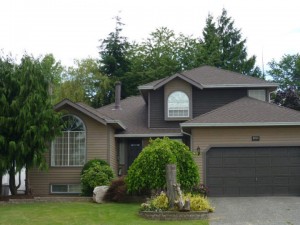The Benefits of Green Roofing
June 26th, 2013 Green roofing represents some of the most modern advancements in the industry. Globally, we are becoming much more aware of our environmental impact and the long-term consequences of that impact. As such, we are always looking for new ways to be environmentally friendly, whether that means driving cars with better fuel efficiency, reusing cloth shopping bags instead of traditional plastic bags, or developing new construction techniques to improve energy efficiency. Green roofs can be adapted to a wide range of building types and they offer a number of significant benefits.
Green roofing represents some of the most modern advancements in the industry. Globally, we are becoming much more aware of our environmental impact and the long-term consequences of that impact. As such, we are always looking for new ways to be environmentally friendly, whether that means driving cars with better fuel efficiency, reusing cloth shopping bags instead of traditional plastic bags, or developing new construction techniques to improve energy efficiency. Green roofs can be adapted to a wide range of building types and they offer a number of significant benefits.
Storm Water
Green roofs reduce storm water runoff. During periods of heavy rain, water runoff from roofs can essentially flood drains and potentially damage waterways and fish habitats. Green roofs retain rainwater, feed plants, and return some storm water to the atmosphere via evaporation and transpiration. Moreover, even storm water that leaves the roof is delayed so as not to overwhelm storm water infrastructure.
Energy Efficiency
Green roofs are more energy efficient than traditional roof designs. Not only do green roof improve insulation to prevent heating in the summer and cooling in the winter, the reduced energy conversion subsequently reduces greenhouse gas emissions.
Air Quality
Because green roofs feature living plants, they actually serve to improve air quality in cities. Plant leaves prevent dust particles from entering the air, while absorbing carbon dioxide and converting it to oxygen. Improved air quality has an added benefit of reducing the need for health care services which translates into cost savings for governments and essentially individuals.
New Wildlife Habitats
Another benefit of green roofs is that they provide new habitats for nesting birds, insects, and other native species. As cities grow, many species lose their natural habitats, but green roofs can actually replace these habitats while serving as stepping stones to connect other habitats throughout the city. Green roofs can even be designed to provide these habitats and improve biodiversity.
Lifespan
Even green roofs require a waterproof membrane, but with these roofs this membrane has greater protection from UV rays and temperature changes. This means that typical green roofs last twice as long as traditional roofs subsequently reducing the cost and material waste associated with roofing repairs and replacement.
Recreational Space
Green roofs also have the potential to give us more social and recreational space. Roofs usually represent an area of space that cannot be used; but green roofs open the potential for park space in an area that was traditionally off-limits. Green roofs can be used as a gathering space for day cares, schools, and offices. They provide improved aesthetics for surrounding buildings while also possibly providing space for urban gardens and agriculture.
As you can see, green roofs are not only great for the environment, but they offer a number of other benefits as well. They reduce our environmental impact while providing new habitats and recreational spaces for the people and animals that live in our cities.




